Mars Desert Research Station
Mission Summary
Crew 218 – The Next Giant Leap
Dec 21st, 2019 – Jan 4th, 2020
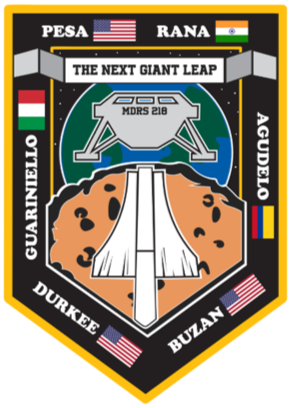
Crew Members:
Commander and Crew Astronomer: Dr. Cesare Guariniello
Crew Geologist: Pat Pesa
Crew Scientist and GreenHab Officer: Dr. Jonathan Buzan
Health and Safety Officer and GreenHab Officer: Shefali Rana
Crew Engineer: Luz Maria “Luz Ma” Agudelo Urrego
Crew Journalist: Benjamin “Ben” Durkee
Acknowledgements:
The entire Crew of MDRS 218 would like to express their gratitude to the many people who made this mission possible: our deepest thanks to Dr. Robert Zubrin, President of the Mars Society; Dr. Shannon Rupert, MDRS Director and Program Manager, who kept an eye on us and was our hero from 1500 miles away; Atila Meszaros and David Mateus, Assistant Directors, who managed and supported our mission in-situ, and helped us troubleshooting the little problems we encountered; Dr. Peter Detterline, Director of Observatories, who trained and assisted our Crew Astronomer before and during the mission; David Murray, GreenHab Team Lead; Michael Stoltz, The Mars Society Liaison, Media and Public Relations; Scott Davis, responsible for Spacesuits; the Mission Support CapCom who served during our rotation: Abhishek Soni, Bernard Dubb, Andrew Foster, Jeremy Sieker, Michelle Espinoza, Simran Mardhani; Purdue MARS, which initiated the crew selection for this mission; Denys Bulikhov, who was selected as commander and, even when he had to drop because of external reasons, gave me valid and very appreciated support; all the departments and people at Purdue University who supported this mission; and all the unnamed people who work behind the scene to make this effort possible, and who gave us a chance to be an active part of the effort towards human exploration of Mars.
Mission description and outcome:
MDRS 218 “The Next Giant Leap” is the third all-Purdue crew at MDRS. This mission encountered different challenges than my previous two experiences, with snow and cold keeping the crew indoors for the first 5 sols and making EVAs much more difficult. The logistics of mission preparation were also different, with two crewmembers being unable to participate to preliminary meetings in person. However, the crew reacted very positively to the adversities, creating strong bonds and always giving each other support in every aspect of the mission. Despite the difficulties, all crewmembers performed to very high standards and provided good work on their research projects, as well as support to projects of the other crewmembers. The morale was always high and is visible throughout our mission pictures, up to the very last day. Even challenges like frozen pipes who forced us to use an alternative pump and carry water upstairs in a chain of pots and containers was experienced like a bonding activity. The research described below touched many aspects of human exploration of Mars, including analysis of outdoor features such as underground structure, weather, and radio emissions, and studies of human factors and the importance of environmental and operational comfort. The crew was also involved in astronomy and outreach through social media, and one of their sol was filmed to be featured in inspirational videos.
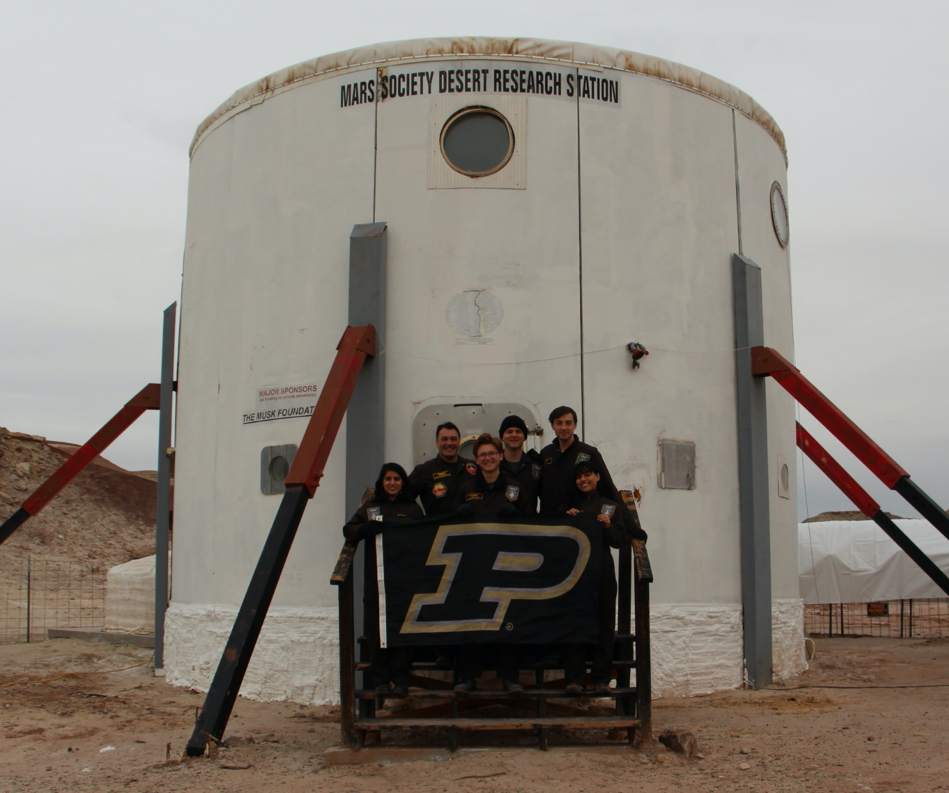
As commander, I am extremely proud of this crew, which faced adversities with flexibility and patience, and was capable to keep the highest level of fidelity and realism. The crew properly followed safety and research protocols, performed as a tight group, and found an appropriate mix of research activities and personal time, especially when the weather conditions forced us to review some of our goals. The pace kept throughout the mission was also challenging, ranging from slow days in the beginning, where our research activities were limited by the lack of EVAs which were necessary for many of our projects, to days with double EVAs, where the crew performed at very high level of quality and effort. As described in the rest of this summary, the crew collected useful and interesting data during their time at MDRS and has plans for use of the data after the completion of the mission, as well as ideas for laying foundations for further collaboration of Purdue crews with the MDRS program.
Summary of Extra Vehicular Activities (EVA)
After being trained in the use of rovers and in the safety protocols for EVA, the crew had twelve excursions during rotation 218, two of which being traditional short EVA to Marble Ritual, and the others being mainly along Cow Dung Rd because of the situation of the roads when covered in snow. Therefore, the EVAs were in areas in the Morrison Formation and Dakota Sandstone. The EVA served seven research projects: seismometric analysis of subsurface, radio measurements, collection of geological samples, autonomy for crew EVA, analysis of biometrics, meteorological observation and evaluation of EMU suits. The crew optimized the time on the field, limiting the driving time to less than 15-30% of the entire EVA duration.
| 1 | 2 | 3 | 4 | 5 | 6 | 7 | 8 | 9 | 10 | 11 | 12 | Total | |
| Sol | 2 | 2 | 4 | 5 | 6 | 7 | 8 | 9 | 10 | 11 | 12 | 13 | |
| Duration (h:mm) | 0:56 | 0:49 | 1:16 | 1:12 | 2:44 | 2:04 | 2:01 | 2:02 | 0:36 | 1:18 | 1:49 | 2:07 | 18:54 |
| Distance (miles) | 1.0 | 1.0 | 1.0 | 2.8 | 7.4 | 4.0 | 4.2 | 5.9 | 0.2 | 1.0 | 5.3 | 6.0 | 39.8 |
| % not driving | 89% | 88% | 100% | 69% | 74% | 87% | 83% | 86% | 100% | 75% | 81% | 72% |
Table 1. Summary of EVA, indicating Sol of execution, duration, distance covered, and time percentage spent in the field
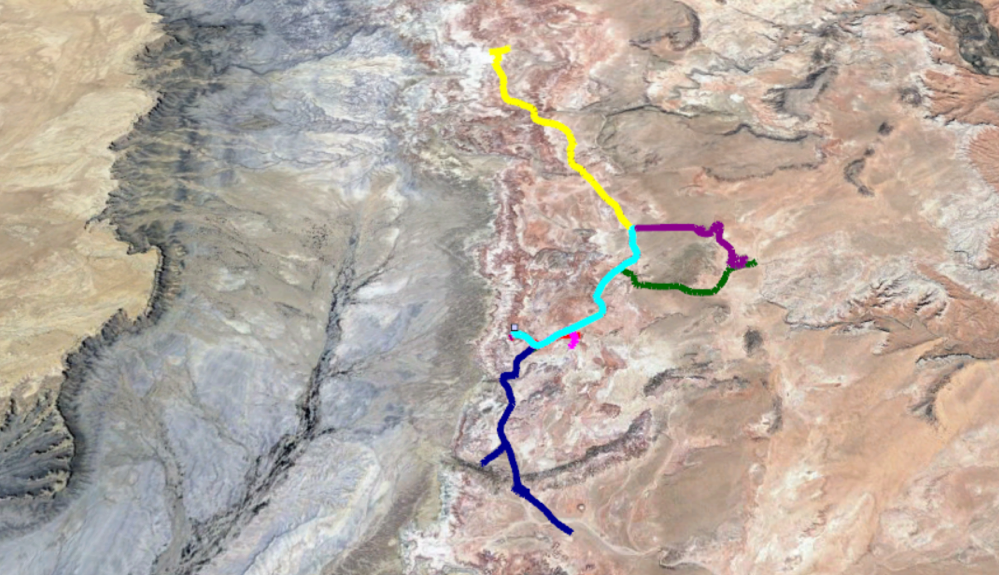
Summary of GreenHab Activities
Crew GreenHab Officer: Dr. Jonathan R. Buzan
The state of the GreenHab is in excellent condition. Snow peas have struggled during rotation, and the strawberries were eaten by a Martian Field Rodent (caught and released). However, the tomato plants, and cucumber have grown considerably, and the cucumber has flowered. We had nearly daily harvests, regular rosemary bread (until we ran out of flour), spices for sauces and curries, and a large salad for 8 people on December 25th. The GreenHab was multi-functional, providing not only food, but a sense of calm and peace in a small habitat building surrounded by a sea of red and snow-white landscape. Overall, the GreenHab was a great place to learn about taking care of multiple plants and is an excellent opportunity to harvest fresh vegetables.
Science Summary
We had 12 separate projects that covered a range of topics. The vast majority were EVA related and were not started until after the first week due to weather related EVA cancellations. The major indoor project evaluated the temperature in a single stateroom for stressful conditions. The EVA projects measured spatial satellite radio strength, rock sampling of surface and seismic mapping of subsurface stratigraphy, real-time measurements of human bio-physiology, EVA suit stressors, field maintenance, decision making, and weather observations. Overall, each project uniquely highlighted each crewmember’s strengths, and brought light to necessity of bringing humans to the surface of Mars for both scientific and engineering related research.
Research Projects:
Title: Decision Making in support of autonomy for crew EVAs
Author(s): Cesare Guariniello
Description, activities, and results: Continuing a research project started last year, during EVAs events have been suggested to the crew, which had to decide how to act following disruptions or injuries, loss of communication, or environmental difficulties. The crew had to decide whether to continue the EVA, modify the primary objective, proceed to secondary objective, or abort the excursion based on safety of the crew, current status of the mission, achieved partial goals, and potential further acquisition of data. Due to the weather conditions, most EVAs had similar destinations, length, and objectives, therefore only a couple of scenarios have been analyzed. While most situations have an obvious “right answer”, such as major injuries, some of the grey areas are more difficult. Even a small disruption when three astronauts are in EVA with two rovers might require two of them to separate from the third one, which can cause safety issues.
Title: Mars surface weather
Author(s): Jonathan Buzan
Description, activities, and results: Martian weather observation and prediction are crucial components for evaluating evolving EVA conditions and overall mission safety for a human crew on the surface of the planet. This project took regular measurements during EVAs. 1) Dr. Jonathan Buzan trained crew members in three critical observations for Martian weather prediction: 1) Observe visibility in the four cardinal directions, determining viewing distance; 2) Vertical observations of cloud cover, type, cloud deck height, and visibility; 3) In-situ temperature, humidity, luminosity, and wind measurements were taken. All of these observations become the baseline for the development of weather station instrumentation, and eventually, localized weather predictions. Most notable aspect of field operations was that the weather changed regularly and quickly, which highlights the importance of trained EVA observations and prediction of weather on Mars.
Title: Subsurface structure on Mars
Author(s): Pat Pesa
Description, activities, and results: The goal of the project was to demonstrate the use of instrumentation for structural analysis of potential locations for building on Mars. Several sites in the MDRS area were chosen based on having different stratigraphic layers and were analyzed using seismometric measurements to determine shallow subsurface rock structure. In-situ procedure was setting out a line of geophones to record data after small impacts gathering information on how vibration waves travel through the sub-surface. After the mission concludes the data will be further analyzed at Purdue with professor Dr. Doug Schmidtt. Applications of this data will be better understanding of non-invasive structural testing of Martian surface for building and development for a sustained human presence.
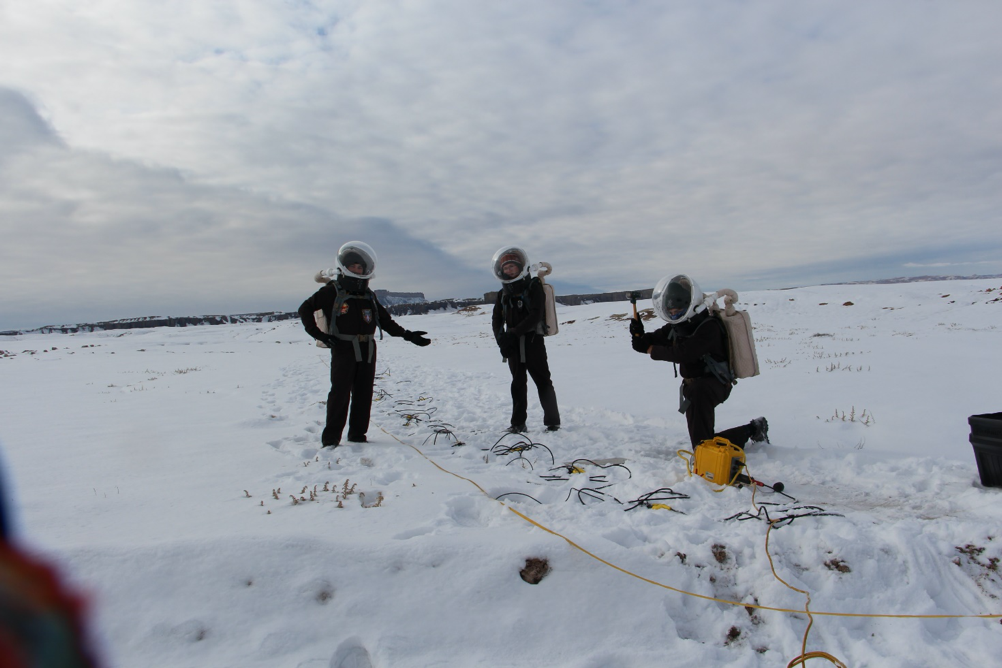
Title: Detecting radio signal strength
Author(s): Ben Durkee
Description, activities, and results: Radiological data was collected on the band of 436 MHz to 438 MHz. Surveys were done in various areas, including directly around the Hab, Cow Dung Rd, Galileo Rd, Kissing Camel Ridge, near White Moon, and more. Preliminary data processing has occurred, and more work is necessary to create the final heatmap of radio signal strength around MDRS
Title: EVA workload analysis
Author(s): Shefali Rana
Description, activities, and results: Feedback was collected from crew for long and short duration EVAs. Variation in score was observed for the exploratory EVAs conducted over a shorter distance versus ones for longer duration where heavier equipment was used for conducting the experiment. Different indicators will be analyzed to identify areas of larger discomfort.
Title: EMU (Extravehicular Mobility Unit) ergonomic assessment
Author(s): Shefali Rana
Description, activities, and results: EMU comfort parameters were scored by the crew for the two suits. There was a difference in score of comfort and ease of egress/ ingress between the two suits (light exploration suit and heavy two-piece suits). Scores also varied among the crew for what concerns ergonomics and ease of use.

Title: Environmental Stresses over MDRS habitat and Crew Members and projection over Martian Terrain Author(s): LuzMa Agudelo
Description, activities, and results: Intending to understand the environmental conditions over Mars Terrain and design habitat structures and instruments that increase the human physical and mental capability, weather observations were performed, and data was collected over the MDRS terrain during Extra-Vehicular Activity (project no. 2). Data was also collected inside the habitat regarding temperature, humidity, wind, and radiation. Preliminary results on the crew engineer bedroom showed the nighttime temperatures with the door close surpassing the threshold of 26.6°C, considered the lower limit for human thermal heat stress, and a nighttime temperature average of 17°C with the door open.
Title: Messier and other space objects for outreach
Author(s): Cesare Guariniello
Description, activities, and results: The rotation saw only two days of clear skies. I managed to perform one day of Solar observations at the Elon Musk observatory, where the Sun did not show any spot or prominence, and one night where M42 (Orion Nebula) and M31 (Andromeda Galaxy) were observed and imaged in the robotic observatory. More observations have been submitted and will be processed after the end of the mission.
Title: Reliability and maintenance
Author(s): Shefali Rana
Description, activities, and results: Reliability of both the habitat structure and the EVA equipment is essential for safety. All equipment has to be installed, maintained and repaired on Mars by the crew and they have to be self-sufficient. For example, the habitat had a failure of the water pump pumping up the water to the tank for daily use. Repair procedure was initiated by crew Engineer. In this project, we simulated failure modes / malfunction of radio and rover during EVAs. Response of affected crew member and adherence / success of repair procedure was studied. This will be used to suggest operational protocols for failure scenarios.
Title: Medical readings in preparation for future crew-wide project
Author(s): Cesare Guariniello
Description, activities, and results: Crew commander wore a Zephyr sensor to monitor heart rate, breathing rate, body temperature, and level of activity 24/7 for three days during the mission. Data will be downloaded and analyzed after the mission, to evaluate areas and times of intense effort, and level of comfort and rest at night. The research project, in collaboration with prof. Barrett Caldwell at Purdue, will be extended to full crews in the future.
Title: Collection of clay and shale samples
Author(s): Cesare Guariniello
Description, activities, and results: Six samples have been collected for study in laboratory at Purdue. The samples will be evaluated for water content and geotechnical properties. Snow coverage did not allow for further collection.
Title: Media and outreach
Author(s): Ben Durkee
Description, activities, and results: @PurdueMDRS on Facebook & Instagram have been updated with pictures and progress updates every other sol. The posts and pictures are unique from each other and from the journalist reports and photos to make sure the audience is not receiving repeat content from all media. Video of Christmas celebrations needs final editing touches before being uploaded once back in regions of more reliable wi-fi.
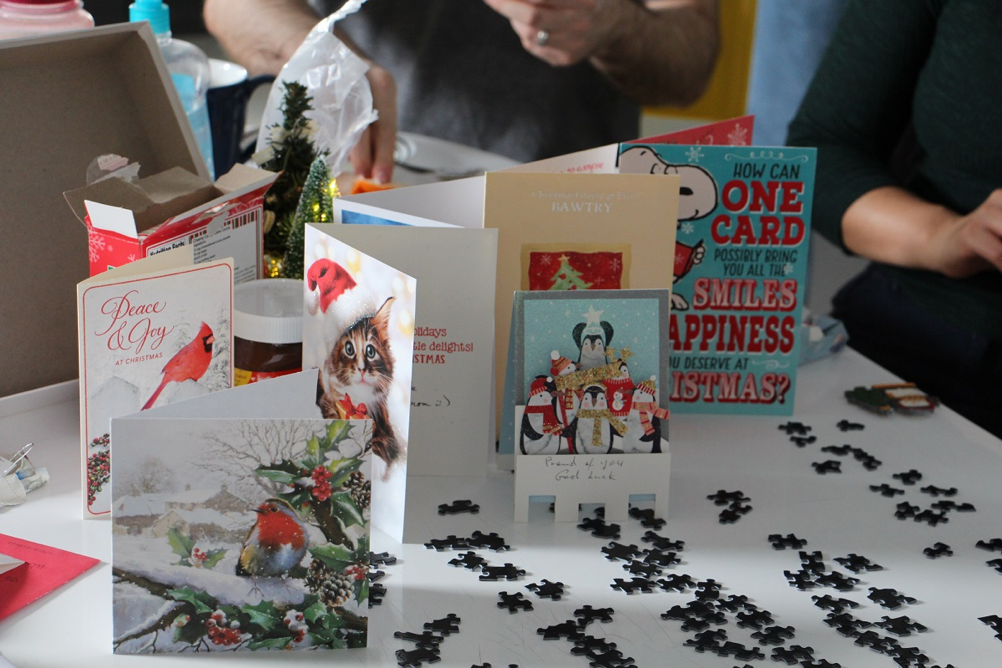
Mars Desert Research Station Crew 218 “The Next Giant Leap”


You must be logged in to post a comment.